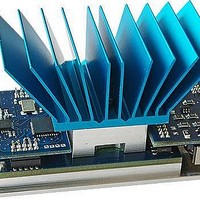TE-POWER-NODE Micropelt, TE-POWER-NODE Datasheet - Page 7

TE-POWER-NODE
Manufacturer Part Number
TE-POWER-NODE
Description
Power Management Modules & Development Tools THERMAL ENERGY HARVESTING DEV KIT
Manufacturer
Micropelt
Type
Energy Harvestingr
Datasheet
1.TE-POWER-NODE.pdf
(9 pages)
Specifications of TE-POWER-NODE
Input Voltage
0.27 V to 2 V
Output Voltage
2.4 V
Board Size
63 mm x 30 mm x 34 mm
Maximum Operating Temperature
+ 105 C
Operating Supply Voltage
0.27 V to 2 V
Product
Power Management Modules
Dimensions
63 mm x 30 mm x 34 mm
For Use With/related Products
MPG-D751
Lead Free Status / RoHS Status
Lead free / RoHS Compliant
Available stocks
Company
Part Number
Manufacturer
Quantity
Price
Company:
Part Number:
TE-POWER-NODE
Manufacturer:
Micropelt
Quantity:
135
TE-Power NODE
4. Application of the TE-Power NODE
4.1 Attaching the Assembly to a Harvesting Target
Attachment of a thermoharvester to its target heat source is a critical factor in any application. The TE-Power NODE
helps to explore the effects of mounting pressure, surface flatness / roughness and various thermal interfaces
materials on the harvesting result. The base of the assembly attaches to the target either through magnetic force or
through 2 tapped mounting holes (M2.6).
4.2 Heatsink Positioning and Orientation
Both positioning and orientation of the TE-Power NODE are of major importance for the power yield, particularly
when the power density of the heat source is low. The alignment of the heatsink fins relative to the heat source
and the direction of natural convection deserves special attention. To help optimize this, the heatsink adaptor has
been designed so that the heatsink can be removed and then re-attached perpendicular to its default orientation.
Note that it is thermally inefficient to place the TE-Power NODE horizontally on top of a heat source (figure A)
where hot air warms the heat-sink. This reduces the effective temperature difference across the thermogenerator
thus lowering the thermovoltage and consequently the TEG’s power output. A forced air flow over the heatsink
instead maximizes power, regardless of position and orientation.
4.3 Radiation Suppression
Hot surfaces radiate in the infrared spectrum. This can cause the TE-Power NODE’s heatsink to heat up, diminish-
ing effective ΔT and thus the power output of the device. In such cases it may be helpful to cover the hot surface
near the TE-Power NODE such that radiation is inhibited. Alternatively, a block of thermally conductive material
may be used to increase the distance between radiating surface and heatsink, thereby improving natural convec-
tion.
www.micropelt.com | phone +49 761 156 337 0 | info@micropelt.com
Figure A: Inferior positioning
TE-Power NODE mounted on top
of the heat source, surrounded by
a bubble of warm air warming the
heatsink. This arrangement yields
low ΔT and low power output.
Self-powered, Wireless Sensor Node & Thermoharvesting Explorer
Figure B1: Preferred positioning
TE-Power NODE mounted on a
heatsink fins aligned horizon-
tally. Results in acceptable per-
formance.
vertical surface with the
Convection Stream
Smart Thermoharvesting
Figure B2: Ideal positioning
TE-Power NODE mounted on a vertical
surface with the heatsink fins aligned
vertically. This is best supporting natural
convection and results in the highest
possible ΔT and power output.
0039DSTPN75x0210v3e |
Page 7


















